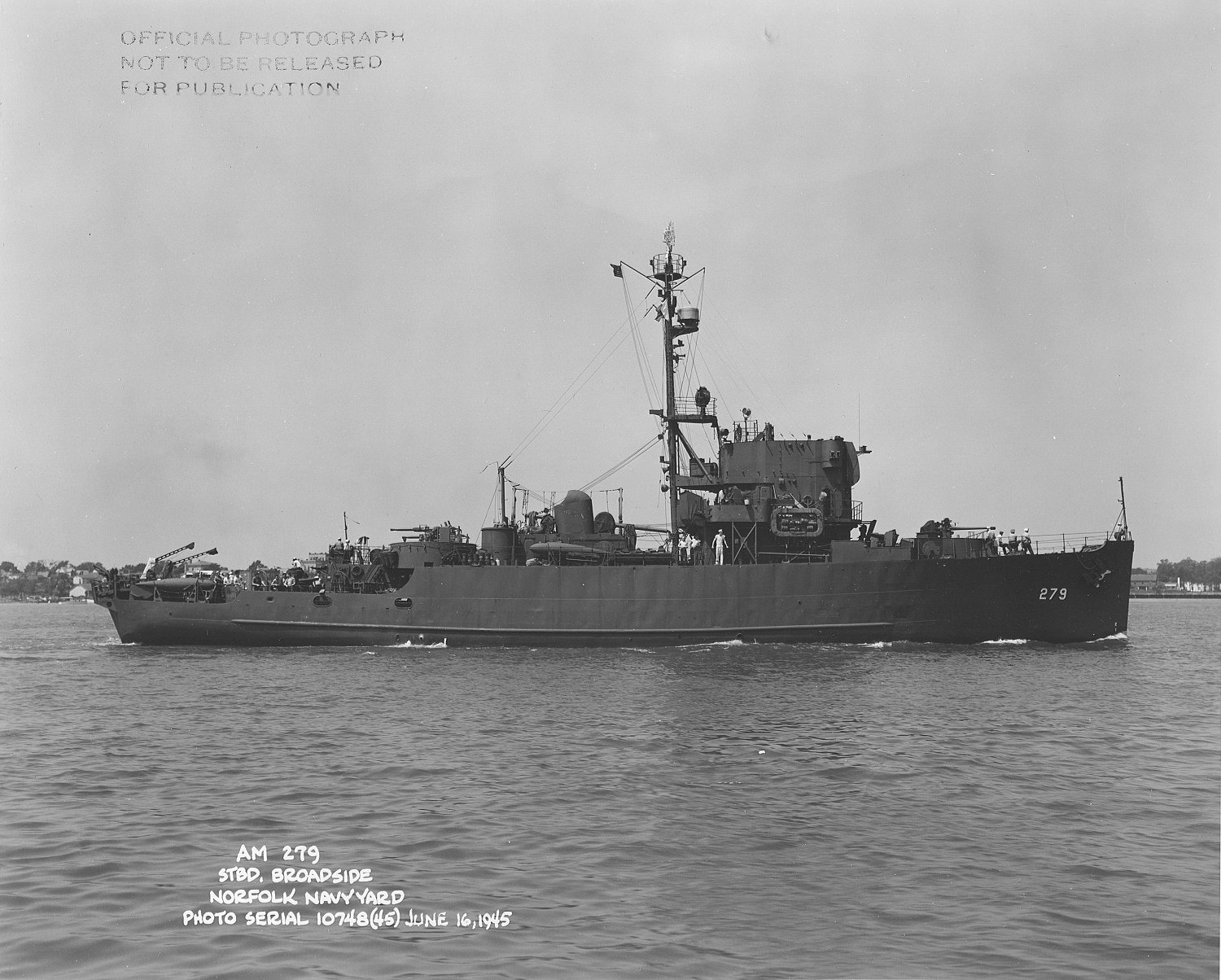Admirable Class Minesweeper
Reviewed by Devin Poore, January 2023
One ship of the class, USS Hazard, survives as a museum at Freedom Park, in Omaha, Nebraska. Another member of the class, the ex-USS Scuffle, was transferred to the Mexican Navy in 1962, decommissioned in 2000, and sunk as an artificial reef and dive attraction off of Cozumel Island. USS Inaugural was at one time a museum ship in St. Louis, Missouri, but broke free of her moorings and sank during a flood of the Mississippi River in 1993. With the recent low-water conditions of the river, her wreck has been fully visible, leading to plans to salvage and scrap the majority of the wreck.
Note: there is very little written about the Admirable class online, and even less about the ships in my personal reference library. The above summary was cobbled together from various websites and the kit's instruction sheet.
There are faint outlines on the deck for the superstructure parts, and on the hull bottom for the prop shafts and supports. The only imperfections I spotted in the entire kit are minor divots along the center line of the bottom of the hull; these will likely never be seen, but if they're a sore spot for the builder, very light putty and sanding will take care of them. The hull has a very fine line running around the waterline, which is a nice indication of where to paint the boot topping, or where to cut the hull if one wishes to do so for a waterline presentation.
The other major components of the hull are the deck houses, which are 3D printed. The main structures are cleanly printed, with only a slight hint of one layer line on the bridge/deck house assembly, that only shows up under magnification, so it'll likely disappear under primer and paint. Details such as portholes and their associated covers, hatches, etc. are printed as part of the deck houses and are very sharp. The wind deflector on the bridge is also included as part of the print; an impressively fine bit of detail. The stack is hollow, with the steam release (at least that's what I think it is) depicted inside the housing.
The full size Admirable class measured at 184' 6" overall, according to multiple sources. The kit hull measures at around 6.25", which is close enough for me.












The first blister pack contains the larger pieces, such as the ship's boats (two styles included, use photo references to decide which to use for a specific ship), life rafts, anchors, boat davits, paravanes, dual 40mm gun mounts, and hedge hog launchers, along with other small parts. Two items that really stand out are the floater net baskets, complete with the floats printed as part of the basket assembly, and the stern depth charge racks, with the depth charges included; I would have killed for such a part while building the old school resin destroyer kits 10+ years ago.
The second blister pack contains the 20mm gun mounts (with a couple of spares), flag bags, ammo lockers, hand wheels, bitts, crow's nest, vents, and everything else needed to give a nice bit of clutter to a ship's deck. I didn't count every piece, but there's a lot of stuff here, and the instructions state that there are duplicates of many pieces, which will make a nice addition to the parts stash, or replacements if any of the fine bits are broken during assembly.
















A small bag of turned brass with the Master logo includes multiple pieces of turned brass and wire, mostly to assemble the mast and flagstaffs. There are a lot of these parts that need to be assembled to build the mast assembly, which will require extra patience and care.
Two small sheets of numbers are included, one in white, the other in black. There are no ship name decals included, nor any flags.













Highly recommended. Thank you to Black Cat Models for the review sample. You can purchase this kit and their other offerings directly from their website, from Freetime Hobbies, and other hobby outlets.


© ModelWarships.com


